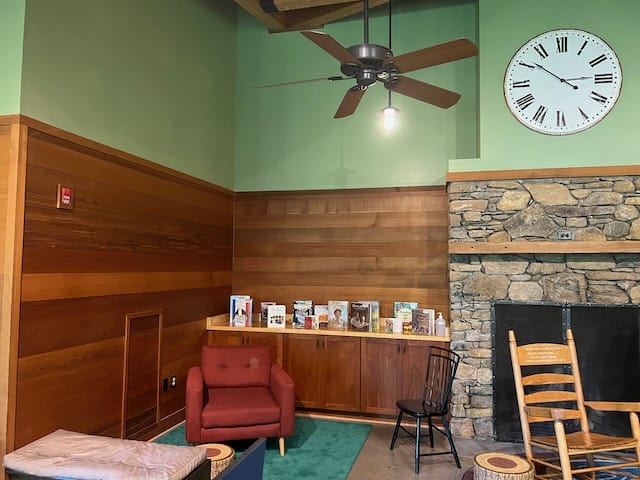Playing “I Spy” at Jefferson’s Monticello in Charlottesville, VA
On a recent visit to Charlottesville, Virginia (check out our posts featuring James Monroe’s Highland and one of my most favorite resorts, the Omni Homestead), we spent a wonderful afternoon at Thomas Jefferson’s Monticello (see ALL the ways to explore Monticello here).
America’s third president, Thomas Jefferson inherited over 3,000 acres of land from his father and built his estate and working plantation, Monticello (pronounced “ch’ello” and Italian for “Little Mountain”), over the course of 40 years in the late 18th century. Jefferson lived at Monticello until his death in 1826. Over the past 100 years, since the Thomas Jefferson Foundation bought the estate in 1923, the main house has been restored and expanded to include museum exhibits, outdoor gardens and vineyards, a restaurant, gift shop, and a robust calendar of family friendly events and programs. Read about the numerous areas of the campus to explore here; but this week, we’re focusing on the Highlights tour of the main house.

Travel Tips:
Would you like to save this?
While taking the guided Highlights tour, have kids look for the following items:
- The unique weekly wall calendar that Jefferson had created (and notice what day of the week is missing from the front foyer and is located in the basement) in the foyer?
- The only pair of elk antlers that survived from the Lewis and Clark Expedition in the foyer.
- Modern recreations of gifts from over 40 different plains tribes given to Jefferson. The recreations were made from modern descendants of the tribal members. The originals were ruined by time.
- Some of the original books from Jefferson’s collection of over 9,000 books in Monticello, one of the largest private libraries in America in daughter’s sitting room.
- The polygraph used to make a copy of every letter Jefferson wrote (he kept a copy of every piece of correspondence) in the office.
- The hidden closet (hint: look up!) in his bed chamber. Note the length of his bed despite Jefferson’s height (people often slept sitting propped up during time, as they thought it would prevent respiratory illnesses).
- Portraits of scientists Francis Bacon, Issac Newton, and John Locke in the Parlor.
- The self activating doors in the Parlor. Both doors can be closed with one pull, utilizing the original chain in the floor.
- The vacuum pump used to conduct scientific experiments that was often a conversation starter with guests in the Parlor.
- The dumb waiters that servants used to serve Jefferson and his family more efficiently in the Dining Room. The family typically ate breakfast at 8am and dinner at 4pm in the bright yellow Dining Room. Bright colored paint was considered a sign of wealth.
Looking for other presidential homes to explore? Check out our post featuring Washington’s Mount Vernon, and Andrew Jackson’s Hermitage. And if you’re in Charlottesville, check out our visit to James Monroe’s Highland. And follow along on our adventures on Instagram, Facebook, Pinterest, and Twitter.
Disclosure: Our family was given a media pass to explore Monticello. All opinions expressed are my own.































Recently, we enjoyed Monticello with a guided tour, and by exploring many of the outside sites. One stop not to be missed is the conversation with Thomas Jefferson held out in the yard several times today. He doesn’t give a speech as much as asks for questions from those sitting on the benches in front of him, and answering with historical fact and reasons for actions taken or not taken. The visit was a real pleasure.
Love this blog post! We were there several years ago with our family and I wish I had the benefit of knowing all your tips. It would have made the trip so much better. The photos are amazing too! Great job as always!
What a fun adventure! You’ve provided some great tips here 🙂
It’s great that museums like these are open to the general public and provide an historical account of previous times that help children to learn their country’s history.
The Highlights tour sounds great, but I would also want to follow the slavery at Monticello tour.
This looks like so much fun! If I had kids I’d definitely take them here.
The tour seems to be a lot of fun! Thanks.